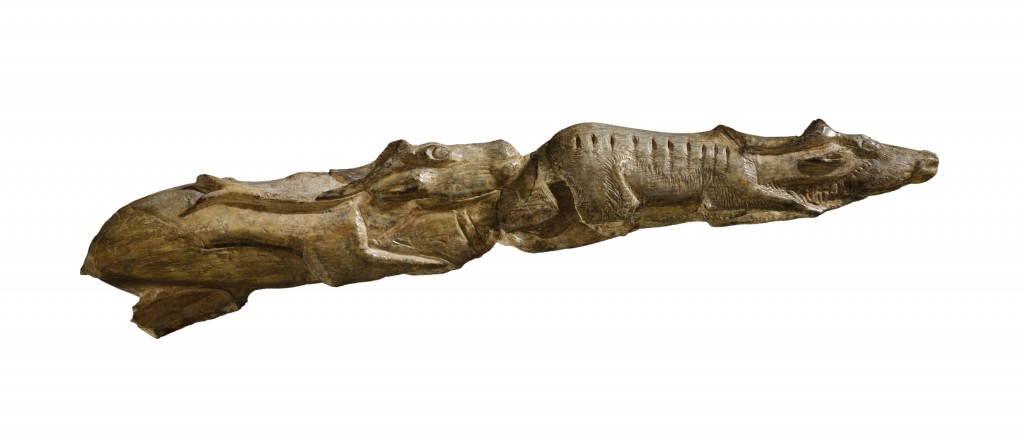|
-
21st April 2015, 04:07
#1
Retired Member

13,000 Year Old Swimming Reindeer Sculpture

What is it?
The ‘swimming reindeer’ sculpture is a beautiful example of portable Palaeolithic art dating to the end of the last Ice Age, around 13,000 years ago. It is 20.7cm long and depicts two reindeer, a male and female, intricately carved into the tip of a mammoth tusk. The male has been sculpted from the larger end and is preceded by the more slender female whose nose forms the point of the tusk. The reindeers’ legs are stretched out and their heads are tilted upwards – a lifelike portrayal of how these animals swim through water that shows the artist had a deep familiarity with the surrounding natural world.
Where was it found and when?
The sculpture was discovered in 1866 by rail engineer and archaeological hobbyist Peccadeau de I’Isle, inside a rock shelter near the village of Bruniquel, in the south of France. It was bought by the British Museum in 1887, where it is now kept in a highly controlled environment due to its delicate nature. The sculpture was originally found in two separate pieces, along with flint tools and other pieces of portable artwork dating to the Late Magdalenian period. It was not until the 1930s that the two sections of the sculpture housed in the British Museum collection were fitted back together again.
Why does it matter?
The accuracy of these reindeer is carefully considered. We can see lines representing ribs, the smooth curve of the antlers, and feathery strands of hair. The artist spent a long time observing these animals, which roamed through France 13,000 years ago, no doubt because they provided a rich source of food, clothing, tools, and weapons for hunter gatherers. The carving is so detailed that experts can see it was created in the autumn, when both male and female reindeer have full antlers and coats.
The sculpture was made using four different stone technologies. The tip of the tusk was chopped, then the outlines of the reindeer were whittled with a knife and scraper. The work was then polished and buffed, and finally the fine details were incised using engraving tools. This alone shows the amount of time and effort dedicated to creating art instead of tools or weapons.
The last Ice Age saw humans making art that depicted the world around them, such as human figures, animals, and plants, as well as a diverse range of abstract compositions using a variety of techniques. Professor Steven Mithen, archaeologist and prehistorian at the University of Reading, sees examples of Ice Age art such as this as an outcome of a shift in human behaviour from between 100,000 and 50,000 years ago when ‘something happened in the human mind that allowed creativity, imagination, and artistic abilities to emerge’. The swimming reindeer sculpture is a rare example of Palaeolithic art that has survived over thousands of years, allowing us to see physical evidence of the early stages of human art and imagination.
Source: http://www.world-archaeology.com/gre...g-reindeer.htm
peace...
-
The Following 10 Users Say Thank You to skywizard For This Useful Post:
Aragorn (21st April 2015), Cearna (21st April 2015), Ciauzar (21st April 2015), Frances (21st April 2015), gardener (21st April 2015), Juniper (21st April 2015), Novusod (21st April 2015), RealityCreation (21st April 2015), sandancer (21st April 2015), Tonz (21st April 2015)
 Posting Permissions
Posting Permissions
- You may not post new threads
- You may not post replies
- You may not post attachments
- You may not edit your posts
-
Forum Rules





 Reply With Quote
Reply With Quote
Bookmarks